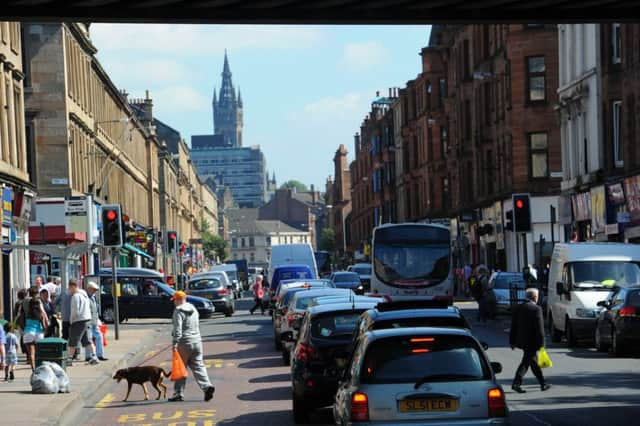Big Rachel and the battle of Partick Cross


This humble shipyard labourer would earn a place in the social history of Glasgow for helping quell a notorious two-day riot.
Rachel Hamilton was born in Ireland but was living and working in Partick by 1875. Like thousands of her contemporaries, it is likely she moved across the Irish Sea to escape the grinding poverty and legacy of famine that blighted the emerald isle in the mid-19th century.
Advertisement
Hide AdAdvertisement
Hide AdScotland was then at the forefront of the Industrial Revolution and its labour-intensive shipyards, factories, foundries and mines required a constant stream of new workers to meet rising demand.
The drastic social upheaval such new technologies caused was plain to see in Partick.
Today, the former burgh is an integral part of Glasgow and its popular West End. But in 1800 it was a small, semi-rural village centred on the banks of the Kelvin, with the river powering several grain mills.
Fast-forward 75 years and Partick had been transformed to a major town in its own right by heavy industry. Its tenement-lined streets were bursting at the seams as more and more people arrived to work in the growing number of shipyards and mills.
From a population of 17,000 in 1871, more than 51,000 were living in the burgh by 1901.
Political and religious differences between protestant Ulster immigrants and catholic settlers from southern Ireland occasionally provoked flash points but the kind of disorder witnessed in many English towns and cities of the time was unheard of in Glasgow.
But the Irish Question, as it was known, was undoubtedly the major political issue of the day. Opinion was sharply divided on whether Home Rule should be granted.
Among its fiercest opponents was the Orange Lodge, which held considerable political influence in Partick and across the west of Scotland in the late 19th century.
Advertisement
Hide AdAdvertisement
Hide AdProponents of Home Rule came from a variety of backgrounds and social classes. It was these two groups that would violently clash at Partick Cross.
Several events were organised by Home Rulers in Glasgow and its adjoining burghs to celebrate what would have been Daniel O’Connell’s 100th birthday in August, 1875. O’Connell was an Irish politician and MP for Dublin, widely recognised as playing a crucial role in securing Catholic Emancipation in 1829.
The main celebration took place on August 7 at Glasgow Green and passed off without incident. It was only when the Partick deputation, numbering around 900, returned at 8 p.m. that a major disturbance, remembered as the battle of Partick Cross, began.
Several of the marchers may have been anticipating trouble as contemporary reports suggest they were already armed with sticks and other weapons.
Among the several hundred people lining the streets to witness the parade’s return was a large number of Orangemen, who, it was reported, were also armed.
“While passing through the principal street of the burgh, a processionist struck one of the bystanders, who returned the blow by giving his assailant a smack on the face. This was the signal for a free fight between the processionists and the crowd,” reported the Glasgow Herald of August 9, 1875.
The Scotsman reported on August 22 a fact that was likely to have aggravated the marchers even further - the Home Rulers’ flag was torn down by a member of the public thought to be an Orangeman.
The Partick lodge would contest this version of events, claiming the man responsible was not one of its members and it had only joined in the violence in an attempt to restore order.
Advertisement
Hide AdAdvertisement
Hide AdRegardless of who was to blame, the scuffle descended into a riot that left the authorities shocked and unable to regain control for several hours.
“A great many people were hurt by stone-throwing and other forms of ruffianism. But their injuries, except in a few cases, are not of a serious nature,” added the Herald.
The disturbance lasted until midnight and the damage to properties along Dumbarton Road was considerable.
Fighting resumed the following evening when a mob of around 200-300 entered Partick.
This time, the authorities were ready. Provost Thomson had already spoken with the Sheriff of Lanarkshire to take the steps required to quell the unrest. Additional police officers from Hillhead and Glasgow were drafted in, and 30 Partick locals were sworn in as special constables.
It was at this moment that Big Rachel entered history. She and her fellow specials were succesful in driving back the mob across the Kelvin and back towards Glasgow.